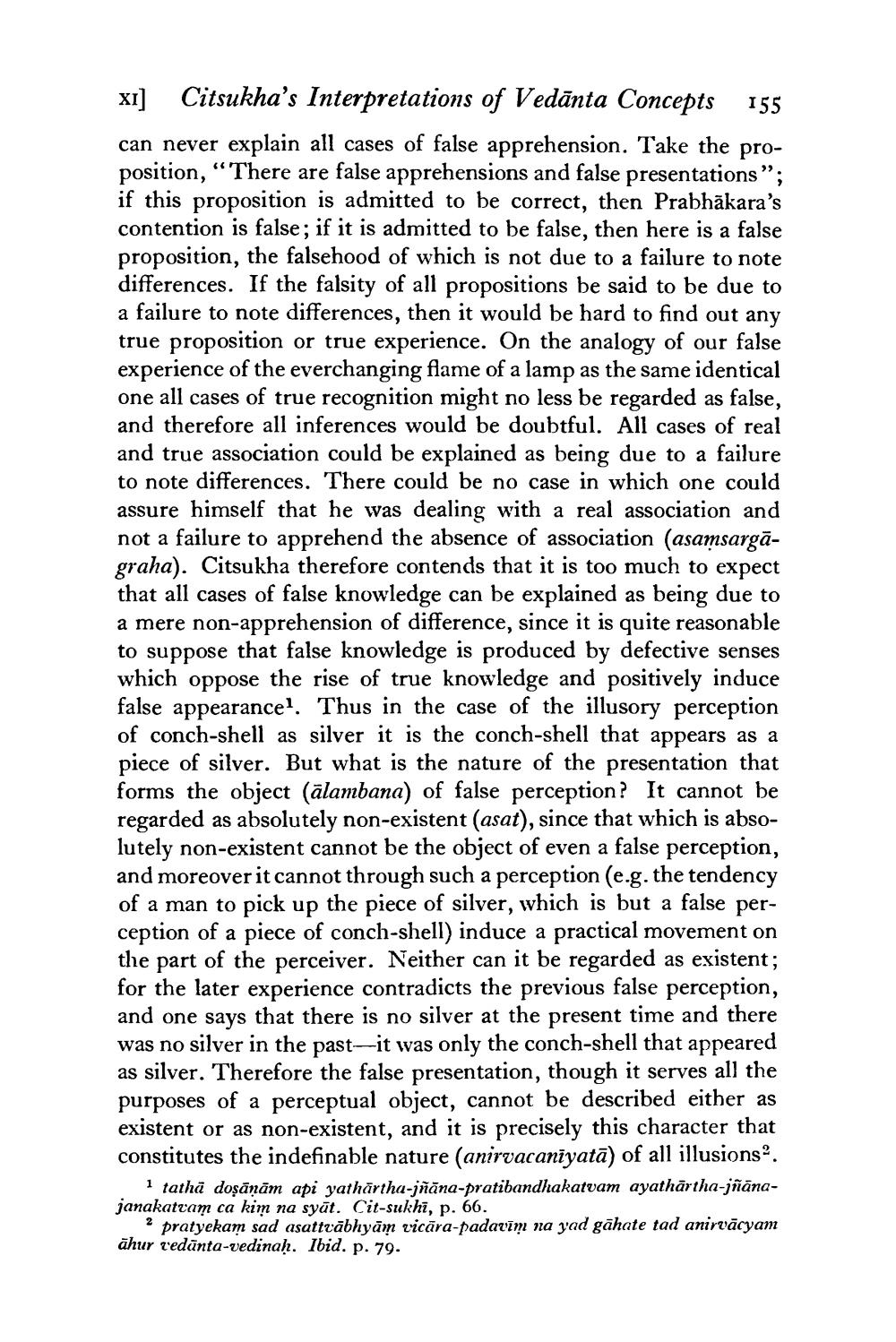________________
x1] Citsukha's Interpretations of Vedānta Concepts 155 can never explain all cases of false apprehension. Take the proposition, "There are false apprehensions and false presentations”; if this proposition is admitted to be correct, then Prabhākara's contention is false; if it is admitted to be false, then here is a false proposition, the falsehood of which is not due to a failure to note differences. If the falsity of all propositions be said to be due to a failure to note differences, then it would be hard to find out any true proposition or true experience. On the analogy of our false experience of the everchanging flame of a lamp as the same identical one all cases of true recognition might no less be regarded as false, and therefore all inferences would be doubtful. All cases of real and true association could be explained as being due to a failure to note differences. There could be no case in which one could assure himself that he was dealing with a real association and not a failure to apprehend the absence of association (asamsargāgraha). Citsukha therefore contends that it is too much to expect that all cases of false knowledge can be explained as being due to a mere non-apprehension of difference, since it is quite reasonable to suppose that false knowledge is produced by defective senses which oppose the rise of true knowledge and positively induce false appearancel. Thus in the case of the illusory perception of conch-shell as silver it is the conch-shell that appears as a piece of silver. But what is the nature of the presentation that forms the object (ālambana) of false perception? It cannot be regarded as absolutely non-existent (asat), since that which is absolutely non-existent cannot be the object of even a false perception, and moreover it cannot through such a perception (e.g. the tendency of a man to pick up the piece of silver, which is but a false perception of a piece of conch-shell) induce a practical movement on the part of the perceiver. Neither can it be regarded as existent; for the later experience contradicts the previous false perception, and one says that there is no silver at the present time and there was no silver in the past-it was only the conch-shell that appeared as silver. Therefore the false presentation, though it serves all the purposes of a perceptual object, cannot be described either as existent or as non-existent, and it is precisely this character that constitutes the indefinable nature (anirvacanīyatā) of all illusions.
1 tathā doşāņām api yathārtha-jñāna-pratibandhakatvam ayathārtha-jñānajanakatram ca kim na syāt. Cit-sukhi, p. 66.
? pratyekam sad asattvābhyām vicāra-padavīm na yad gāhate tad anirvācyam āhur tedānta-vedinah. Ibid. p. 79.




